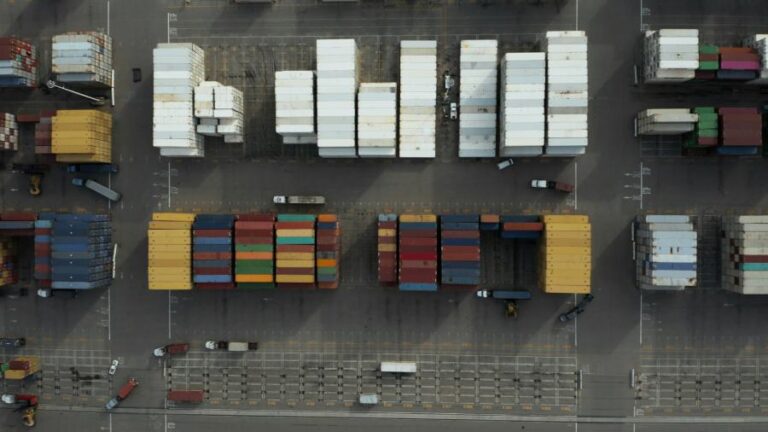Table of contents
Table of contents- The Iberian Blackout and its consequences on the supply chain
- Economic consequences of the blackout
- How did the blackout affect the supply chain?
- Supply chain disruptions are the new normal
- Conclusion: strengthening the resilience of people and supply chains is imperative
Pandemic-like conditions once again swept across the Iberian Peninsula at midday and in the afternoon of 28 April. The electricity blackout and the inability to communicate via the internet led to anachronistic scenes. Groups of people surrounding battery-powered transistors in an attempt to receive some information about what was happening, creating images reminiscent of a state of emergency.
As in the early days of COVID, uncertainty once again drove many people to supermarkets and convenience stores. If toilet paper was the main object of desire during the initial phase of the pandemic, this time batteries, radios and candles took centre stage.
The consequences of this historic blackout were very different depending on the circumstances of each person. Those who were working from home did not experience the blackout in the same way as those who were trapped for hours on a train or in a lift. However, the fact that the most acute phase of the crisis lasted less than 12 hours meant that the overall impact on the general population was limited.
Economic consequences of the blackout
The massive blackout brought economic activity in Spain and Portugal to an abrupt halt for much of 28 April. Shops closed, factories came to a standstill and offices were evacuated, all of which were common scenes during the power outage. The direct impact on GDP, although significant, is expected to be a one-off event. In Spain, the employers’ association CEOE estimated losses equivalent to 0.1% of GDP (around €1.6 billion) on the first day.
On the other hand, the Ministry of Economy, Trade and Enterprise estimated that the blakout meant a 55% drop in payment systems, mainly credit and debit cards, because many card readers stopped working and many shops simply closed. The Ministry also noted that between €130 and €140 million euros of the purchases that were not made were made in the hours and days after the service was restored. To recoup these losses, numerous business associations have already begun claiming compensation.
How did the blackout affect the supply chain?
The 10-hour power and internet outage on the Iberian Peninsula had immediate effects on the supply chain. With telephone and internet networks down, coordinating deliveries and replenishment became a very difficult task. So how did the blacout affect each of the links in the supply chain?
Impact on retail: paralysed demand and unexpected peaks
Retailers were caught in the middle of the outage. With physical shops left without power, point-of-sale (POS) terminals inoperative and e-commerce platforms offline, demand came to an abrupt halt. However, key sectors such as food, pharmaceuticals and convenience stores experienced a rebound effect: once power was restored, atypical spikes in purchasing distorted the demand forecast. Retailers that were able to continue operating more or less normally captured the demand lost by businesses that had to shut down.
There were also panic purchases of basic emergency items (candles, batteries, bottled water) which emptied shelves within hours. However, as this is such a short crisis, no bullwhip effect is expected.
Disconnected distributors
In logistics centres, the breakdown of warehouse management systems (WMS), radio frequency and automated conveyors forced operations to stop or manual processes to be improvised without traceability.
The lack of visibility over orders in progress, combined with the inability to coordinate deliveries with retailers or manufacturers, led to bottlenecks and delays that persisted for days. Without connectivity, decisions were made based on outdated or incomplete information. It is worth noting that major distribution groups often have backup generators, which helped to mitigate the impact.
Transport was not spared from the chaos either. Rail services came to a standstill and road transport was also limited due to problems with fuel distribution and the failure of many traffic light (most signals were out of service).
Manufacturers: production lines shut down
For manufacturers unable to rely on alternative power supplies, the outage meant having to stop production and send workers home. The disconnection of planning systems disrupted both production lines and visibility of raw material and component inventory.
Purchasing and procurement: decisions without data
At all levels, from retail to manufacturing, procurement teams faced the same challenge: operating with (almost) no visibility. The collapse of planning and supplier collaboration systems blocked, in many cases, the issuing of orders and the management of incidents, among other common supply chain tasks.
Supply chain disruptions are the new normal
A first glance, Spain might be considered an area where supply chain disruptions are less likely. A well-armed network of infrastructures, good weather, far from conflict zones… However, the truth is that the Iberian country has not stopped suffering disruptions in its supply chain, driven by both global events and local events. A clear indicator that supply chain turbulence is the new norm.
Instability in two of the world’s major shipping lanes
In recent months, two of the world’s main shipping lanes for international trade, the Suez Canal and the Panama Canal, have experienced disruptions that have had a major impact on international supply chains.
On the one hand, the Panama Canal is going through a historic drought crisis: the lack of rainfall has drastically reduced the draft and the number of daily transits, causing congestion, delays and costly detours for vessels carrying containers and key raw materials to Europe. This situation is forcing logistics operators to rethink shipping routes and absorb additional costs that affect the final price of many products.
At the same time, the Suez Canal has become a focal point of geopolitical tensions due to attacks by Houthi rebels on commercial vessels in the Red Sea. These attacks, initially targeting ships linked to Western or Israeli interests, have forced many shipping lines to avoid the route and sail around the Cape of Good Hope, adding 10 to 15 days to transit time to Europe. The result has been longer delivery times, higher freight rates and less reliable logistics schedules. For European companies, these disruptions create an environment of constant uncertainty that requires increased planning, supplier diversification and responsiveness to global events.
The Ukrainian war and its energy impact on Europe
The war in Ukraine has had a profound and sustained impact on European supply chains, not only through the direct disruption of trade with Russia and Ukraine, but also through its wider effects on strategic sectors. Shortages of raw materials such as wheat, corn, fertilisers, aluminium and natural gas have strained key industries such as agri-food, chemicals and manufacturing.
At the same time, surging energy prices have raised production and transport costs across Europe, forcing many companies to rethink their supply network, seek alternative suppliers and optimise inventories to remain competitive in a highly volatile environment.
In Spain, climate emergency and labour unrest
In Spain, the combination of extreme weather events and labour tensions has put the resilience of its supply chain to test. The recent DANA that struck the Valencian Community caused flooding that paralysed logistics centres, damaged transport infrastructure and put thousands of shops and warehouses out of service. This local disruption had national repercussions, slowing down the distribution of goods and interrupting inventory flows, especially in the food, retail and pharmaceutical distribution sectors.
Compounding this were rising levels of labour unrest. Transport strikes called during 2024 by the UGT and CCOO unions, together with sectoral stoppages in port and rail logistics, have led to frequent disruptions in the movement of goods.
Conclusion: strengthening the resilience of people and supply chains is imperative
The April blackout served as an unintentional stress test and demonstrated that, while Europe’s systems are robust, they are not infallible. The early recovery of services and the supply chain helped limit the overall impact and damage. However, it shows us how important it is to be prepared and how essential resilience is to anticipate failure, minimise the impact of disruptions and accelerate recovery.






